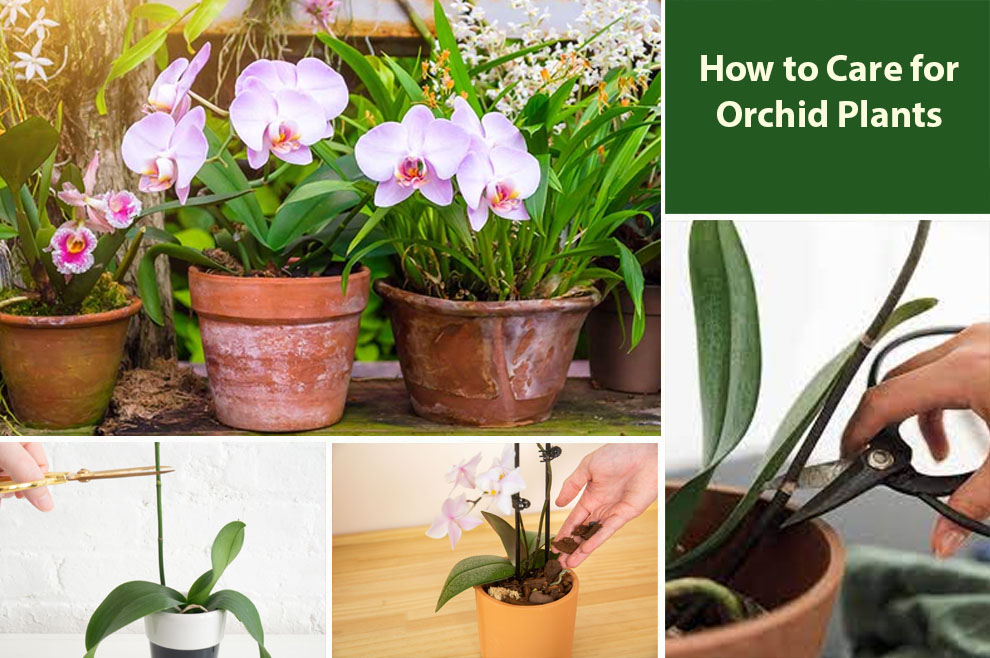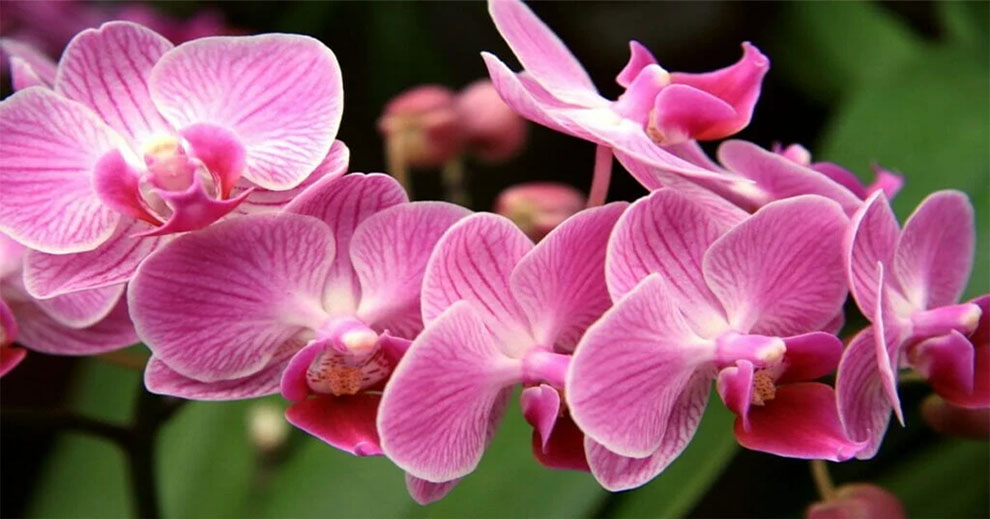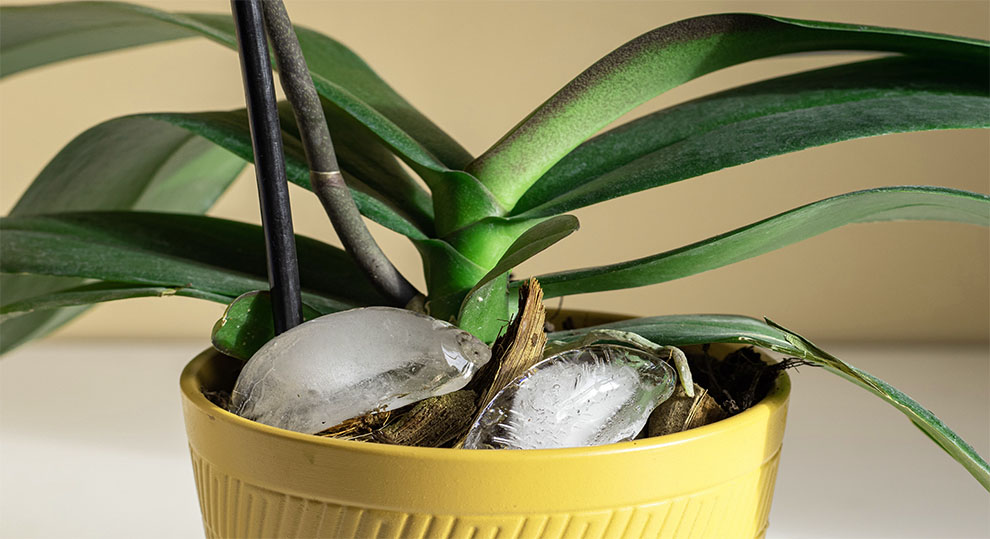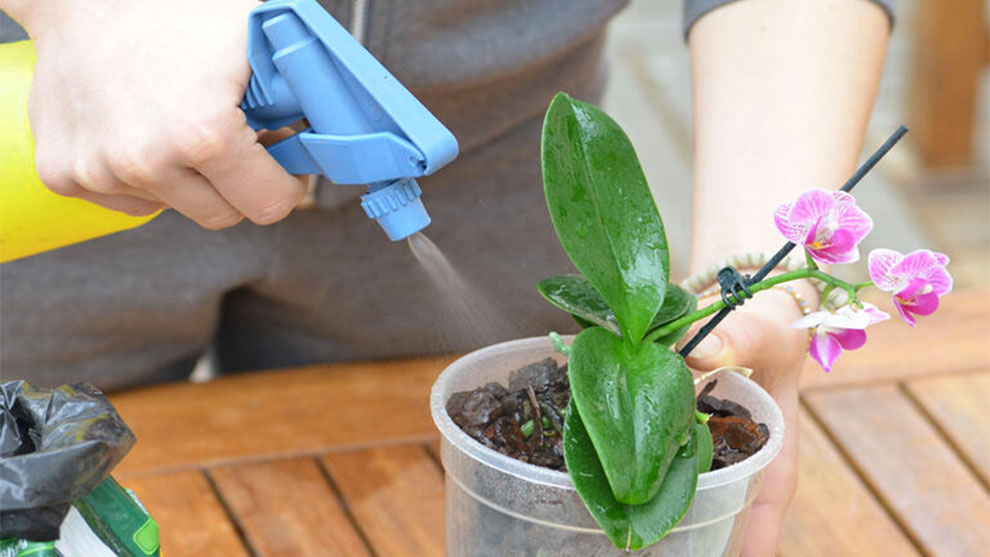How To Take Care Of Orchids Indoors & Outdoors
Orchids are mesmerising beauties that grow best between 60°F – 80°F in bright indirect sun and rich aerated soil. For them you must keep a gap between two waterings and use dedicated orchid fertilizers only.

Orchids are known for their exquisite beauty and delicate charm, captivating the hearts of flower enthusiasts globally. With their elegant blooms and vibrant colors, Orchids add a touch of sophistication to any garden or home.
But caring for orchids can be challenging, as they need specific attention and conditions to thrive. But fear not if you don’t know everything about how to take care of orchids.
We are here for you. With the correct knowledge and techniques, you can cultivate these stunning plants and enjoy their appealing display year after year.
Orchids thrive in environments that mimic their natural habitat. Giving them indirect, bright light and proper ventilation to avoid stagnant air helps.
Watering is also a crucial aspect of orchid care. It helps maintain a delicate balance between under and overwatering. Let the potting medium dry out slightly before you can water again.
Feed orchids regularly with a balanced orchid fertilizer to provide vital nutrients. You can maintain an optimum humidity level by placing the orchids on a tray filled with water or using a humidifier.
You must think of repotting when the potting medium breaks down or the orchid outgrows the current container. With these fundamental care practices, your orchids will thrive and reward you with breathtaking beauty.
Orchids Care Guide At A Glance
| Sunlight | Bright indirect light |
| Soil type | Well-draining orchid mix |
| Soil pH | Slightly acidic to neutral |
| Temperature | Varies by species, generally 60-85°F (15-29°C) |
| Water | Allow drying between waterings |
| Fertilizer | Orchid-specific fertilizer, diluted |
| Pruning | Remove spent blooms and damaged parts |
| Repotting | Every 1-2 years, when outgrowing pot |
How To Care For An Orchid Plant?
In this segment, we will take you through the vital care tips to maintain a thriving and healthy orchid plant.
A. Is potting soil okay for orchids?
No.
Potting soil is not best suited for orchids. It retains too much water and may result in root rot. Orchids need a well-draining medium that allows air circulation around the base. So, the best soil for orchids is a specialized orchid mix.
Alternatively, a potpourri of charcoal, perlite, bark, and sphagnum moss also helps. These materials offer the plant necessary drainage while retaining some moisture.
You must select a medium that meets the needs of your grown orchids, as different orchids have varying requirements. Avoid regular potting soil. It can suffocate the roots and curtail the plant’s overall growth.
B. Do orchids need direct sunlight?
No.
Orchid varieties prefer indirect but bright light. Of course, they need ample sun to produce flowers and thrive, but the direct sun can be too intense. It may scorch the leaves or cause discoloration.
So how to take care of orchids if the sun is too sharp? Consider placing them near an east or west-facing window where they receive gentle afternoon or morning sun, ensuring they receive a filtered, bright sun.
Alternatively, you can employ blinds or sheer curtains to diffuse the sunlight and guard the orchids against harsh rays.
C. What is the best temperature and humidity for orchids?

Ideally, the suitable temperature range for most orchids is between 60°F (15°C) and 80°F (27°C) during the day, with a slight drop in temperature at night.
Orchids thrive in temperatures that mimic their natural habitats, which can vary depending on the orchid species.
As for humidity, orchids cherish moderate to high humidity levels. The ideal humidity range for most orchids is between 50 and 70 percent.
But how to keep orchids alive if the humidity is low? You can achieve the required humidity by placing your orchids on water-filled trays. Alternatively, using a humidifier can also help elevate the moisture levels in the air.
Misting the leaves can also help with humidity. However, be cautious and do not leave the water droplets on the foliage for a prolonged duration, as it can lead to bacterial or fungal growth.
Beyond humidity and temperature, proper air ventilation is also vital for orchids. Good air circulation helps avoid pathogen growth and ensures that orchids’ roots and foliage remain healthy.
Do not place the orchids in a stagnant area with poor air movement. Keeping the windows slightly open or a gentle breeze from the fan can help with better air circulation.
D. How often should orchids be watered?
The watering frequency depends on several factors, such as the type of orchid, potting medium employed, and the growing environment.
Generally, watering the orchids when the potting medium starts drying out is a crucial step in the orchids’ care guide.
To assess when you must water, check the moisture levels by inserting your finger about an inch into the potting medium. If it feels dry at the depth, you can water it.
But do not overwater, as excessive moisture leads to root rot. Watering once every seven to ten days is a reasonable approach, but factors like the pot size, humidity, and temperature also play a role.
E. Orchid ice cube watering: Is it helpful?

It is a controversial subject amongst orchid enthusiasts. While typically considered a convenient method, it is not the best practice and not something we recommend.
Orchids cherish a controlled amount of water with consistent moisture levels. It is not possible with the ice cube method, as you must water your orchids with room temperature water and ensure potting medium’s thorough hydration.
F. Which is the best orchid fertilizer?
Pick a balanced plant food exquisitely formulated for orchids. You can look for a fertilizer with a 20-20-0 or 10-10-10 NPK analysis. These ratios can provide the orchids with essential nutrients for growth and flowering.
As for the feeding frequency and timing, you must feed the orchids during the active growth periods, usually from spring to early fall.
The right way how to care for orchids is never complete without a diluted fertilizer. Dilute it to a quarter or half of the recommended strength and use it every two to four weeks.
Always follow the instructions on the packaging label and adjust the strength and frequency based on the specific brand and grown specie.
Before applying fertilizer, water the orchids. Further, during the winter months and when the orchid is not actively growing, reduce or suspend fertilization as the plant’s nutrient requirements are low.
Monitor the orchid’s overall health and growth to determine the apt timing and fertilization frequency to support optimal blooming and development.
How To Prune Orchids?
Pruning orchids are usually not typical, but in some situations, pruning may be necessary. Here are the tips for trimming your orchids:
- If you notice wrinkled, yellow leaves on orchids, remove them with sterile or clean scissors or pruning shears. Cut as close to the base as possible without damaging healthy leaves or stem.
- If you notice any diseased or damaged portions, such as blackened or brown leaves or stems, trim them back to the healthy tissue. Make clean cuts to reduce infection risk.
- After the orchids finish blooming, trim the flower spike to help them redirect their energy to new growth. Cut the flower stems narrowly above the node using a sterile pruning tool.
- Divide the orchids if they become overcrowded by separating them into smaller divisions, ensuring each division has sufficient roots for healthy growth. Repot them in a fresh potting medium.
Orchid Care Repotting (Root Care)
Repotting is crucial as it helps ensure the root system’s vitality and health. Here are some signs that indicate it is time to repot your orchid:
1. Crowded or overgrown roots: When roots fill the pot thoroughly or look tightly packed, they need repotting.
2. Broken-down or decomposed potting medium: When the potting medium starts decomposing or breaking down, it loses its ability to provide adequate airflow and draining, resulting in root rot.
3. Lack of blooms or poor growth: When your orchid has stunted growth or does not produce flowers despite good care, it can be because of depleted nutrients or overcrowded roots in the potting medium.
Ideally, repot the orchids once every 12 to 24 months. Here is a step-by-step orchids care guide for repotting:
- Repot once the orchids finish blooming or during the early growing season.
- Pick a pot slightly larger than the current one and ensure it has drainage holes.
- Prepare a fresh orchid-specific potting mix or a charcoal, perlite, bark, and sphagnum moss blend.
- Gently remove the orchid from its current container, ensuring no damage to the roots.
- Examine the roots for any sign of damage or root rot and trim mushy, dead, or decaying roots with sterile or clean tools.
- Insert the orchid in a new container, spreading the roots evenly. Fill it with a fresh potting medium, ensuring it supports the orchid securely.
- After repotting, water enough to settle the new potting medium around the roots.
- Place the repotted orchid in a suitable location with the right temperature, light, and humidity. Avoid direct sun to prevent root stress.
Related: How to make orchids grow faster | Orchid Lifespan
What Are The Major Pests Of Orchids?
To learn how to keep orchids alive, you must be vigilant and regularly inspect the orchids for pest attacks. Some pests that attack orchids are:
- Aphids are soft-bodied tiny insects that feed on plant sap causing stunted growth and leaf discoloration.
- Mealybugs are cottony, white pests that feed on the sap, resulting in stunted growth and leaf yellowing.
- Spider mites are tiny pests that spin webs and feed on the underside of the leaves, resulting in leaf drops and yellow spots.
- Scale insects are oval-shaped, tiny pests that annex to the plant and such sap, resulting in yellowing leaves and weakened growth.
Prevention
To avoid pest attacks:
- Inspect regularly for any signs of pests
- Follow the care instructions to the T.
- Quarantine newly acquired orchids to curtail the spread.
Treatment
- Use a cotton swab dipped in rubbing alcohol for minor infestations.
- Use insecticidal soaps or horticultural oils for significant infestations.
- Consider biological controls by introducing bacterial insects like predatory mites and ladybugs to avoid future infestations.
How To Care For Orchids Indoors?
To care for the orchids indoors provide indirect, bright light near west or east-facing windows. Maintain the temperature between 60°F and 80°F (15°C – 27°C) and moderate to high humidity levels.
Water when the potting medium starts to dry out, using room temperature water. Use a well-draining orchid-specific potting mix and feed your orchids with a balanced orchid fertilizer during active growth.
Ensure good air circulation and repot every 1-2 years. Monitor for pests, diseases, and nutrient deficiencies, adjusting care as needed.
Orchid Care After Flowering

Once the orchids blooms, you must take steps for their aftercare. Here are some guidelines to follow:
- Remove the flowers that have wilted or faded by cutting the stem above the bud or node. It helps the plant direct its energy toward new growth.
- Give them bright, indirect light.
- Ensure they have a slightly drying-out period between two watering. Once they bloom, continue watering regularly, and understand the orchid’s needs to not under or overwater it.
- Use a balanced orchid plant food diluted to half its strength and fertilize the orchids once every two to four weeks.
- Maintain humidity levels by grouping orchids together or using a humidifier if necessary.
- Inspect regularly for pests and diseases and take remedial actions anytime you spot an infestation.
- Provide proper rest to deciduous or cool-growing species after flowering by reducing watering and providing a cooler temperature.
How Do I Get An Orchid To Rebloom?
For your orchids to rebloom, follow the tips below:
1. Implement a fertilizing regimen: Start applying plant food to your orchid every two weeks.
2. Improve the light access:Ensure the orchids get ample light by relocating them closer to the window with a west or east exposure.
3. Consider a new placement for the plant:Try moving the orchid to a cooler environment with temperatures ranging between 55 and 65 degrees Fahrenheit. Please keep it in this area until a fresh flower spike emerges.
Patience and consistent care are necessary when attempting to prompt orchids to rebloom.
